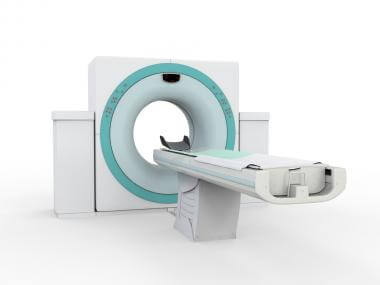What Is Radiation?
Where does it come from? How can it hurt you? How can we avoid it? Quick and Dirty Tips’ newest expert, Ask Science, answers these and many other questions about radiation.
Radiation.
The word itself sounds ominous. It conjures up images of toxic waste fields and superheroes with strange powers. Most of the time it isn’t something that we think about unless we have to.
The 2011 Tohoku earthquake and tsunami led to the meltdown of one of the Fukushima nuclear reactors in Japan. The meltdown caused widespread concern about possible radiation poisoning. But what exactly is radiation and how can it poison you?
What Is Radiation?
Technically, any energy that moves through something is called radiation. Light from the sun traveling through space, radio waves from your local station traveling through the air, and heat traveling from a hot iron to your hand are all forms of radiation.
It’s handy to sort the different forms of radiation based on how much energy each one contains. If you were to take all of the different kinds of radiation in the universe and arrange them from lowest energy to highest energy, you would have what scientists call The Electromagnetic Spectrum or EM Spectrum, for short.
Radiation on the lower end of the EM spectrum, things like radio waves, heat, and visible light, are sometimes lumped together in a group called “non-ionizing radiation.” The nastier sounding types like ultraviolet rays, X-rays, and gamma rays on the high end of the EM spectrum are collectively called “ionizing radiation.”
At this point you might be thinking, “Great. This radiation stuff is everywhere. It’s only a matter of time before it gets me!” Fortunately…
…it’s only the ionizing kind of radiation that leads to radiation poisoning, and only in very large doses. This is the kind of radiation that the media is usually talking about when they mention things like “radiation leak” and “irradiated super-hero.”
What Is Radioactive Decay?
Sometimes an atom will have too many or too few neutrons in its nucleus, making it unstable, or radioactive. Just like a middle-aged man stepping on the scale for the first time since high-school, these atoms have a strong desire to shed some of their particles in order to reach a stable form. This shedding of particles is called radioactive decay.
Depending on the exact type of atom, atoms going through radioactive decay will emit or kick out alpha particles (a couple of protons stuck to a couple of neutrons) or beta particles (stray electrons) in an effort to become more stable. They can also emit high-energy gamma rays in the process. Radioactive isotopes will often go through an entire series of these changes in order to reach a stable form. Some of these changes can take years, others just a fraction of a second.
How Does Radiation Affect Living Creatures?
Ionizing radiation has enough energy to break chemical bonds and knock electrons out of atoms, changing their net charge. Atoms with missing or extra electrons are called ions, which is why this kind of radiation is called ionizing radiation.
Atoms prefer to have a net charge of 0, so charged ions can get a bit cranky. So cranky in fact, that we sometimes call them free radicals. These revolutionist atoms are much more likely to react with other atoms than their uncharged cousins. Since your body chemistry relies on a finely tuned set of chemical reactions to keep things in balance, having these radical ions around can cause quite a bit of damage inside your cells.
If the damage is too severe, the cells will die. If too many cells are destroyed or damaged at once, such as from a high dose of radiation in a short time period, entire organs can start to fail, eventually leading to death. This is called acute radiation syndrome or radiation poisoning.
If the damage isn’t too severe or widespread, your cells typically have ways of repairing themselves. Unfortunately, sometimes these , which can still lead to cancer in the long term
How Much Radiation Is Too Much?
So now that you’re cowering in your closet so as to avoid your microwave, you might be wondering just how much is “too much.” This is where things get a bit fuzzy. For one thing, it’s not the amount of radiation you’re exposed to that is the real problem; it’s the amount and kind of radiation that is absorbed over a certain length of time.
Alpha particles coming from outside your body are too large and slow to penetrate your skin. Similarly, beta particles can be blocked by a few layers of clothing. In contrast, gamma rays can penetrate your body without any trouble, causing more damage. On the other hand, if you were to eat or breathe something that emits alpha or beta particles, the soft tissue inside your body would be affected by that radiation.
A lot of the confusion about how much radiation is too much comes from the fact that scientists have about a dozen different units for measuring radiation, depending on exactly what they want to measure about it. More confusing is the fact that some of these units have changed meaning over the years, and some sources get their conversions between the units mixed up.
Rather than make you suffer through several more definitions, I’ll just tell you that there are two measurements which quantify the amount of damage caused by radiation, taking into account how each type of radiation differs in its ability to affect biological tissue.
Most of the world uses sieverts (Sv) for this measurement. Unfortunately, just like its obsession with feet, Fahrenheit, and furlongs, the United States and organizations located there tend to use rems instead of sieverts. Fortunately it is easy enough to convert between the two, as 100 rems equals 1 Sv.
How many sieverts of radiation someone can absorb before they start to have problems actually varies slightly from person to person. Rather than talk more about sieverts or rems however, I’m going to introduce a more familiar analogy to help keep things in perspective…
The Currency of Radiation
Let’s pretend that the laws of the universe have rearranged themselves so that every time you’re exposed to radiation, you also earn some money. In this new and profitable universe we’ll say that 1 Sv of radiation is worth $1,000.
If the average person earns $100 in radiation money in a short time period, their blood chemistry will start to be affected; at around $500 they’ll start to experience nausea and vomiting; and at somewhere between $800 – $1,000 they’ll start to see hair loss and internal hemorrhaging. A payout of $4,000 or higher is typically .
There is no way to shield your body from all forms of radiation. Even if you live in an underground box made of lead, living off tofu and distilled water, your body will still experience radiation. Every day you are bombarded with cosmic radiation from space, radiation from radon in the ground, and radiation that occurs naturally inside of your body. Depending on where you live and whom you ask, you will earn about $2.00 – $3.00 in radiation money each year from this .
“Ah,” I hear you asking, “but what about X-rays, mammograms, MRIs, and CT scans? Surely all that radiation does more harm than good! These doctors are trying to kill me!”
Continuing with our monetary analogy, the average chest X-ray adds only $0.02 to your annual total, mammograms have about twenty times the exposure, which is still only $0.40, and MRIs don’t expose you to ionizing radiation at all. Radiation from CT scans varies depending on the type, but the average cranial CT scan earns you about $2.00 in radiation .
What About Cancer?
These numbers only deal with acute radiation poisoning. What about the long term risk of cancer caused by radiation exposure? According to the , an average of 2,000 out of every 10,000 adults will die from some form of cancer. If you expose everyone in that group to an extra $10.00 of radiation in one year, the number will jump to about 2,005 people. This is why X-ray technicians hide behind a wall while giving you an X-ray, since they may have to administer thousands of exams every year, whereas you may only experience a handful.
What About Fukushima?
It’s still a little early to know the exact effects of the Fukushima disaster. Understandably, everyone in Japan now seems to own a personal Geiger counter. Unfortunately this has led to some contradictory information circulating in the media.

Until next time, I’m Ask Science, with Quick and Dirty tips for Making Sense of Science.
Resources
Here are some additional resources to help you learn more about radiation levels:
-
A great infographic showing relative radiation levels from different sources: XKCD Radiation
-
An online radiation dose calculator from the EPA to help you estimate your average annual radiation dose: EPA Radiation Calculation
-
FA Mettler, Jr et al. Effective Doses in Radiology and Diagnostic Nuclear Medicine: A Catalog Radiology July 2008 248:254-263
Warning sign image courtesy of Shutterstock.
You May Also Like…






